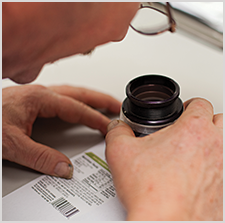3 Steps for Choosing the Best Pressure Sensitive Label
January 17, 2017
When it comes time for you to finalize your packaging, label construction is likely the last thing on your mind. Yet there is a lot of thought that we put into converting a label that meets the needs of your product, packaging environment and consumer use – particularly for pressure sensitive labels. Why, might you ask? To give you a better sense of what we mean, we’ve highlighted the 3 steps we take before choosing the best pressure sensitive label for your product.
- Analyze your container
What might be an obvious first step is to analyze your product’s container. Is it glass, plastic, metal or cardboard? It is rigid, squeezable or flexible? If plastic, what resin is it made of? If cardboard, is it virgin or recycled? Each of these packaging types have a set of unique elements that help your converter determine a label substrate that not only looks good on your container, but also runs efficiently on your packaging lines. It addition to overall container composition, we’ll also want to consider your container’s shape and surface structure. Is it round, square, oval, rectangle, curved, contoured or a combination of unique shapes? Is it smooth, rough, glossy or have multiple surface textures? All of these questions are important when choosing a label adhesive and determining how your labels will react when being applied to your product.
- Understand your application process
After analyzing your container in more detail, the next thing we consider is your pressure sensitive label application. First things first, is your label application in a linear or rotary line? Does your label use a direct transfer, tamp on, blow on or a combination applicator? What are the typical speeds that your pressure sensitive label applicator is running at? Are you satisfied or unsatisfied with these speeds? Do you have a missing-label detector or splice detection in place? Then we’ll go one step further and take a look at your label application environment. Is it wet, dry, hot, cold or frosty? Is your label storage environment the same or different? Is there any sort of contamination that your labels may come in contact with, such as powder, oil or liquid in your manufacturing environment? Unfortunately labels can become a product of their environment and as a result, take on different properties because of it. Prior to hitting the store shelves will your product be subject to a sterilization process, such as pasteurization, HPP, autoclave, or gamma radiation? These processes can sometimes alter your original container and therefore, change your pressure sensitive label adhesion. Having a better understanding of the application process that your labels are subject to will help us find the right pressure sensitive label construction for the job.
- Plan for product end-use
Once we’ve fully understood your application process, we’ll start to plan for the final test that your container and label will have to endure – end-use. Once on the store shelf, will your label be subject to freezer or refrigeration? Does the product itself have cleaner, oils, solvents or food properties that could come in contact with the label while your product is being used? Will the label be exposed to abrasion, tension, solvents, extreme temperature or light during its end-use? Will it be used primarily indoor or outdoor? Are wet, hot, cold, dry or a combination of these conditions a concern? Are there any compliancy standards that your label will have to adhere to, such as REACH or CONEG? Planning ahead for all of these end-use requirements will help us determine if your pressure sensitive label components will continue to perform throughout your container’s full lifecycle. The last thing you want is a label that holds up in your manufacturing environment, but is a nuisance to your consumers.
There you have it – our 3 steps to choosing the best pressure sensitive label for your product. Since a pressure sensitive label consists not only of label substrate, but also coatings, adhesives and liners, it is easy to see why having these three steps is necessary. It’s just one of the many tried and true ways we construct a pressure sensitive label that is perfect for your container, application and end-use consumers.



